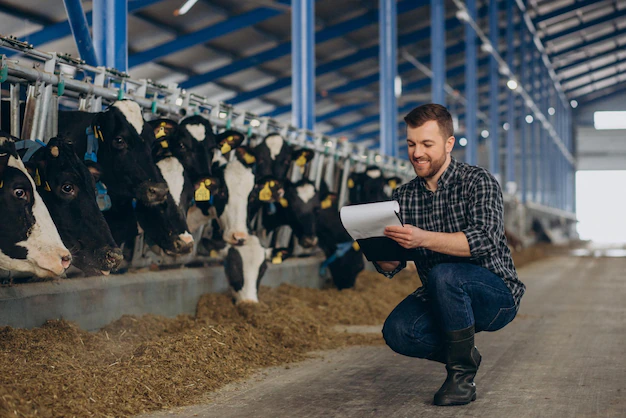Livestock Identification and Tracking Systems play a crucial role in animal management by providing a means to accurately identify and track individual animals throughout their life cycle. These systems typically involve the use of unique identification numbers, tags, or electronic devices to identify and monitor livestock.
Here are some key roles and benefits of Livestock Identification and Tracking Systems:
- Disease Control and Biosecurity: Identification and tracking systems enable rapid tracing and containment of livestock in the event of disease outbreaks. By quickly identifying and locating affected animals, authorities can take appropriate measures to prevent the spread of diseases and minimize economic losses.
- Food Safety and Quality Assurance: Livestock identification systems contribute to food safety and quality assurance by allowing for traceability of animal products. In the case of a foodborne illness outbreak or product recall, authorities can identify the source of contamination and remove affected products from the market efficiently.
- Animal Health Monitoring: By tracking individual animals, health issues can be identified early, and appropriate veterinary care can be provided. Tracking systems allow for monitoring of vaccination records, medication history, and other health-related data, enabling better disease prevention and management.
- Breeding and Genetics: Livestock identification systems assist in maintaining accurate breeding records and pedigree information. This information helps livestock breeders make informed decisions regarding breeding programs, genetic selection, and improving overall herd or flock performance.
- Animal Welfare: The ability to track individual animals enables better monitoring of animal welfare conditions. It helps identify and address issues such as overcrowding, inappropriate handling, or inadequate nutrition, promoting better animal welfare practices.
- Management and Productivity: Livestock identification and tracking systems provide valuable data for herd or flock management. This includes monitoring individual animal growth rates, feed consumption, reproductive performance, and other parameters. Such information allows farmers to optimize feeding regimes, breeding programs, and overall productivity.
- Market Access and Trade: Many countries require livestock identification and traceability for international trade. Compliance with identification and tracking standards enables access to export markets by demonstrating the ability to trace the origin and health status of animals and their products.
Livestock Identification and Tracking Systems are essential tools for animal management. They improve disease control, enhance food safety, support animal health monitoring, facilitate breeding programs, promote animal welfare, aid in management decision-making, and facilitate international trade. By implementing these systems, stakeholders in the livestock industry can enhance productivity, sustainability, and overall efficiency.
Join 'Farmers Mag' WhatsApp Channel
Get the latest Farming news and tips delivered straight to your WhatsApp
CLICK HERE TO JOIN






